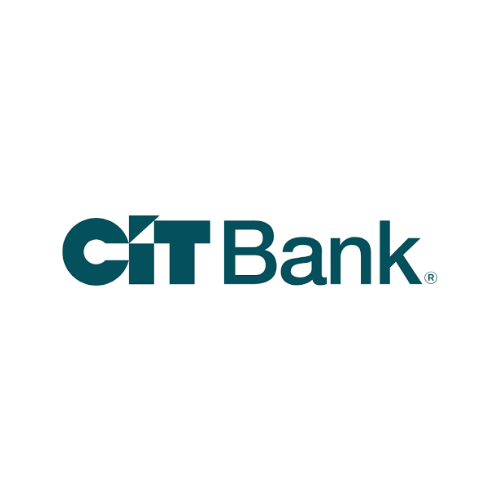10 Ways to Invest Small Amounts of Money
Some products in this article are from our partners. Read our Advertiser Discloser.
Looking for ways to invest small amounts of money?
It may seem like the system is stacked against you. Many mutual funds require an initial investment of thousands of dollars, and they take a percentage of your money on top of that.
In addition, investing in individual stocks can be hard if share prices are high. But there are many ways to invest small amounts of money.
Where to Invest Small Amounts Of Money
There are several options for investing small amounts of money at a time. Some opportunities are more aggressive and volatile than others.
Investing in several of these ideas can diversify your portfolio and help you manage risk.
1. High-Yield Savings Account
If you are starting to save money, one of the first places you’ll want to look is the bank. You might start an emergency fund, for example.
A high-yield savings account is a low-risk way to earn interest on your entire account balance.
The interest rate for a high-yield savings account can be significantly higher than a traditional savings account.
Most online banks are free and don’t require a minimum balance. Discover Bank can be one of the best options as there are no monthly fees or balance requirements.
These bank accounts also have FDIC Insurance up to $250,000. If the bank fails, you can recover the first $250,000 in deposits.
2. Bank Certificate of Deposit
You may earn even more money than a high-yield savings account if you place funds in a certificate of deposit (CD).
A CD can offer a higher interest rate if you agree not to withdraw your money before a certain time. Most bank CDs are a “term CD” because you invest for a specific number of months.
For example, a 12-month term CD means you invest for 12 months. You can withdraw your funds penalty-free when the investment term ends.
The early withdrawal penalty is usually several months of interest income. The bank discloses the early withdrawal penalty before you invest.
If you choose to renew your CD, your balance reinvests at the then-current interest rate. It can be higher, lower or the same as the original rate.
Many online banks offer CDs with terms as long as five years (or as short as a few months.)
3. Commission-Free Index Funds
One of the tricky things about buying stocks is that single shares of stocks are expensive. One of the easiest and cheapest ways to invest small amounts of money is with index funds.
These funds seek to match the performance of a stock market benchmark like the S&P 500.
Not guessing which stocks will outperform the market keeps investing costs low since fund managers don’t sell stocks often and pay taxes. As a result, index funds have some of the lowest investment fees.
Index funds are available in for these asset classes:
- S&P 500
- Large-cap US stocks
- Small-cap US stocks
- Government bonds
- Investment-grade corporate bonds
- Developed markets international stocks
- Emerging markets international stocks
Many long-time investors, including Bogleheads, invest most of their cash into index funds. The low costs and simplicity make index fund investing easy.
Some index funds only have a $1 minimum investment. Others require a $100 initial investment but only have a $1 subsequent investment minimum.
So, if you can invest in an S&P 500 index fund and get exposure to 500 companies. But if you buy single shares, $100 only lets you buy into a few companies.
Another advantage of index funds is that you don’t have to rebalance your asset allocation frequently. The fund manager keeps the portfolio diversified.
If you hold several different types of index funds, you will still have to rebalance your stock and bond index funds periodically.
Most online stock brokers offer index funds, individual stocks and thematic ETFs with no trade commissions.
4. Individual Stocks
Many investors dream of buying and holding an unknown stock to become a millionaire. However, buying stocks is riskier and requires more money to diversify than buying index funds or thematic ETFs.
However, buying high-quality stocks with promising growth potential can boost investment returns and not rely entirely on index funds.
There are many brokers to choose from that let you buy stocks and funds. A micro-investing app can be the best option for investing small amounts of money.
M1 Finance is a free investing app offering stocks, ETFs and premade investment portfolios. You can buy fractional shares and assign a target asset allocation to each position.
You can open a taxable account ($100 minimum) and IRA retirement accounts ($500 minimum). All subsequent investments only require $25, but you can buy multiple stocks with each trade.
5. Dividend Reinvestment Plans
You may also decide to buy dividend stocks for recurring passive income and potential share price growth.
Most dividend stocks are “blue chip stocks” that are well-established companies. Usually, they are the largest companies in their industry.
Dividend-focused stocks tend to pay a higher dividend than growth stocks. But their share prices may not grow as much as stocks that reinvest profits to grow their brand instead of paying a dividend.
The dividend stocks pay quarterly payments. Reinvesting these dividends by buying more shares can be a powerful way to increase your earnings.
The problem with dividends, however, is that they often don’t amount to enough to buy a full share of stock.
For example, let’s say you own 100 shares of a stock that pays a quarterly dividend of 39 cents per share. This means you’ll get $39 each quarter.
But a new stock share sells for about $45. So, how can you reinvest the dividends?
6. Robo-Advisors
Not every investor wants to manage their own investment portfolio. They may not have the time, skill, or desire. If this is you, consider investing with a robo-advisor.
A fully-automated robo-advisor automatically invest small amounts of money into a basket of index funds that matches your investing goals and risk tolerance.
As you grow older, the robo-advisor gradually shifts your asset allocation into a more conservative strategy. You may start holding 90% stocks and eventually reduce to a 70% position for instance.
Most robo-platforms charge an annual advisory fee of around 0.25% of the portfolio value. The fee is $2.50 per $1,000 you invest at this fee level.
7. A 401k Plan
If you have an employer-sponsored retirement plan such as a 401k or 403b, this option can be the easiest way to start investing.
Your employer can invest a percentage of each paycheck. Many employers also offer matching contributions for the first portion of your investment.
Most 401k plans offer index funds, target-date retirement plans, and stocks. If you live on a small income, you may decide only to contribute enough to earn the full employer match.
401k plans have tax advantages that minimize your taxable income. You only pay taxes once on the contribution amount.
Traditional 401k contributions reduce your taxable income upfront, but you pay taxes based on the withdrawal amount.
Roth 401k contributions require you to pay income tax upfront, but your withdrawals are tax-free.
8. Crowdfunded Real Estate
Crowdfunded real estate can also be a reliable way to earn recurring income. Most investments are for multifamily apartments and commercial real estate with multiple tenants.
Unlike owning rental properties, you do not have to screen tenants or handle repairs. Many real estate platforms have a minimum investment of $500 or more. While that’s more than investing in stocks, it’s a low threshold for private real estate.
You can earn regular dividend income by collecting rent payments from the tenants. A second way to make money is when the platform sells properties for a profit.
The annual investment returns can be competitive with those of S&P 500 index funds. However, most crowdfund investments require a five-year commitment.
The long-term investment commitment is how crowdfund real estate can offer above-average investment returns. Potential risks include depreciating property values, vacant properties, and tenants not paying rent.
9. Small Business Bonds
Small business bonds can provide a higher yield than traditional bond investments. Bond index funds invest in large corporations and government bonds.
Worthy Bonds lets you invest small amounts of money and earn 7% per year with a minimum $10 investment. These loans are collateral-backed; however, small businesses can be riskier.
The additional risk is why this investing idea has a higher yield versus traditional bonds.
10. Precious Metals
Precious metals like gold and silver are popular stock market alternatives. Buying gold coins is one option but can require investing a few thousand dollars at one time.
Physical silver is more affordable than gold but can still require investing over $100 at once.
It’s also possible to invest small amounts of money into “vault gold” with Vaulted. Once your balance is high enough to buy a 1 oz. bar, you can request delivery or keep it in the vault.
Summary
As you can see, there are several ways that you can invest small amounts of money so that you can begin building wealth.
Make sure to choose the one that best fits your personality and risk tolerance.







I would like to restart investing my I lost my job I Janurary 2020 and receive unemployment benefits and I wad trying to find the best way to start rebuilding my money. I had to withdraw my 401k early that’s gone .